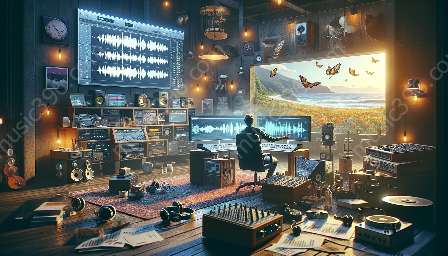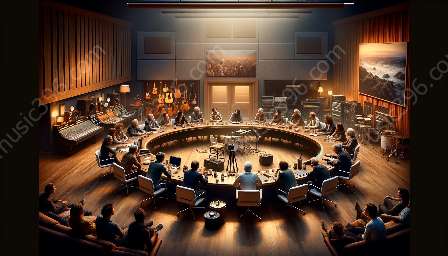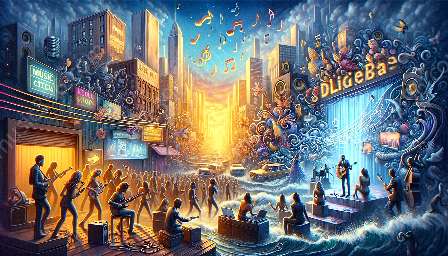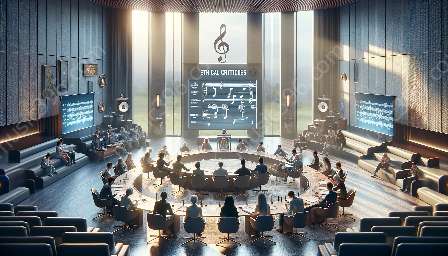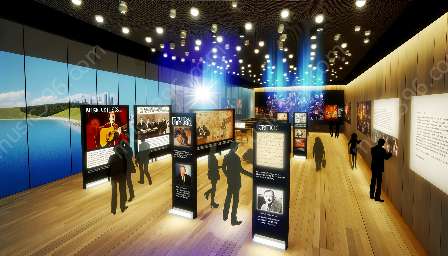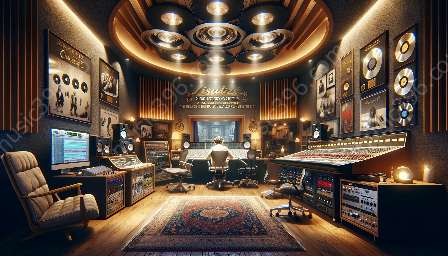Over the years, jazz music criticism has undergone significant changes as a result of technological advancements and the rise of new digital platforms. These shifts have revolutionized the way music is both created and evaluated, leading to a transformation in how jazz music is critiqued and consumed. This article delves into the impact of digital platforms on jazz music criticism, exploring the various ways in which technology has shaped the practice and its relevance within the broader landscape of music criticism.
Evolution of Jazz Music Criticism in the Digital Age
The digital revolution has drastically transformed the music industry, marking a shift from traditional modes of distribution and consumption to online platforms and streaming services. In this context, jazz music criticism has evolved to adapt to the changing landscape. Digital platforms have provided critics with a broader reach, allowing for the democratization of music critique and opening up new channels for engaging with audiences.
Moreover, the proliferation of online forums, blogs, and social media has provided a platform for both amateur and professional critics to express their views on jazz music. This democratization of critique has led to a diversification of voices within the realm of jazz music criticism, offering a more inclusive and multifaceted approach to evaluating the genre.
Impact on the Industry and Artists
With the advent of new digital platforms, jazz musicians and artists have gained access to a wider audience, transcending geographic boundaries and reaching listeners across the globe. This increased visibility has not only affected the way jazz is consumed but has also influenced the standards by which it is critiqued. Digital platforms have accelerated the process of music discovery, allowing for a more diverse range of sounds and styles to be explored and incorporated into the evolving landscape of jazz music.
Furthermore, digital platforms have enabled jazz musicians to directly connect with their audiences, eliminating the need for intermediaries and traditional gatekeepers. This direct interaction has empowered artists to receive immediate feedback on their work, shaping the way they approach their creative process and respond to critical evaluation.
Role of Technology in Critique
Technology has not only expanded the reach of jazz music criticism but has also influenced the methods and tools used in evaluating music. Digital platforms have given rise to innovative forms of critique, such as multimedia content, interactive reviews, and collaborative platforms for discussing and analyzing jazz music.
Audio and video streaming services have allowed critics to incorporate sound clips and visual elements into their reviews, providing audiences with a richer and more immersive experience. This multimedia approach has enhanced the quality and depth of music critique, enabling critics to offer a more comprehensive assessment of jazz compositions and performances.
Evolution of Audience Engagement
One of the most significant impacts of new digital platforms on jazz music criticism is the transformation of audience engagement. The interactive nature of online platforms has facilitated two-way communication between critics and consumers, allowing for a more dynamic and participatory form of critique.
Online forums, social media, and dedicated music platforms have created spaces for ongoing dialogue and debate around jazz music, engaging audiences in critical discussions and fostering a sense of community among listeners. This direct engagement has blurred the lines between critics and audiences, creating a more collaborative and inclusive approach to jazz music criticism.
Challenges and Opportunities
While new digital platforms have brought about significant advancements in jazz music criticism, they have also presented challenges to the traditional modes of critique. The abundance of online content and the diversity of voices can sometimes lead to information overload and make it difficult for audiences to navigate through the plethora of reviews and opinions.
Additionally, the democratization of critique has raised questions about the authority and expertise of critics in the digital age. As amateur voices gain prominence alongside professional critics, the boundaries of expertise and credibility in music criticism have become more fluid, posing a challenge to the established hierarchy of critique.
Despite these challenges, new digital platforms have also created opportunities for innovation and growth within jazz music criticism. The accessibility of online platforms has enabled critics to experiment with new formats, engage with diverse audiences, and explore unconventional approaches to evaluating jazz music.
Conclusion
In conclusion, the influence of new digital platforms on jazz music criticism has been profound, reshaping the practice and expanding the boundaries of critique within the genre. The evolution of digital platforms has democratized critique, facilitated direct engagement between artists and audiences, and fostered a more dynamic and inclusive approach to evaluating jazz music. As technology continues to advance, the landscape of jazz music criticism will undoubtedly undergo further transformations, shaping the future of music critique in the digital age.





